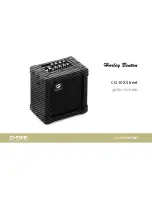
VA-10X User Manual
_______________________________________________________________________________________________________________
___________________________________________________________________________
version 7.0
page 11
it can be used to optimize the measurements by connecting it to an electrode shield (see
Ogden (1994) for setting up a driven shield configuration). The headstage is attached to the
amplifier with the headstage cable (see #
4,
Figure 2) and an 8-pole connector. For maximal
flexibility the headstage is mounted on a plastic plate by customized screws. Thus, the user
can modify the mounting plate according to his needs, e.g. to mount the headstage to a
micromanipulator.
Note
: The shield of the BNC connector and the enclosure of the headstage are linked to the
command potential output (driven shield configuration) and must not be connected to ground.
Caution
: Please always adhere to the appropriate safety precautions (see chapter 1). Please
turn power off when connecting or disconnecting the headstage from the HEADSTAGE
connector!
5.2.
3-Electrode Headstage (optional)
The 3-electrode headstage differs from the standard headstage in having an additional 1 mm
electrode connector (REFERENCE) between the GROUND and COMMAND connectors for
measuring the bath potential. This signal is processed electronically, so that the command
potential is floating with respect to the bath potential. Therefore, the command potential is
independent from any bath potential that may occur. Usually an Ag-AgCl silver electrode or
pellet is used for measuring the bath potential.
Important
: If REF is not used, REF must be connected to GROUND.
Figure 3: VA-10X 3 electrode headstage with CFE electrode holder (optional)
Reference for typical application:
Marinesco, S. and Carew, T. J. (2002). Serotonin Release Evoked by Tail Nerve Stimulation
in the CNS of
Aplysia
: Characterization and Relationship to Heterosynaptic Plasticity.
J.Neurosci.
22
(6), 2299–2312.







































